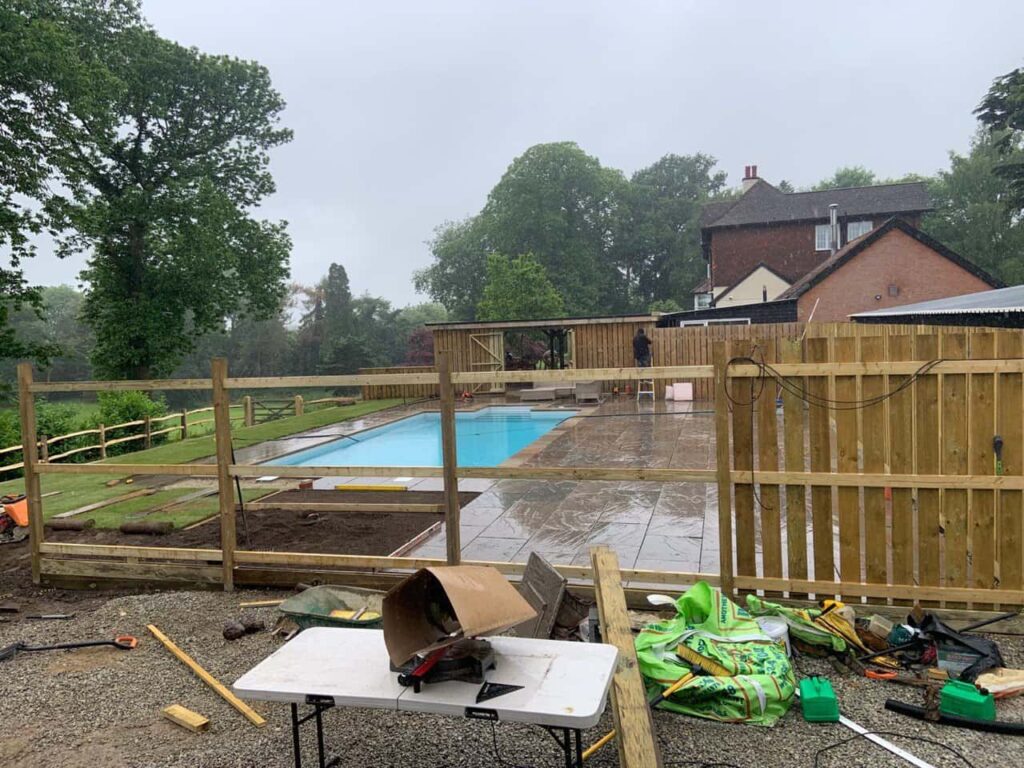How Stock Fencing Ensures Safety and Structure on Agricultural Land
Stock fencing is one of the most essential investments for agricultural land, providing a secure barrier to protect livestock, crops, and property. When properly installed, stock fencing not only defines boundaries but also ensures the safety of your animals and helps maintain the overall structure of your land. In this blog post, we will explore why stock fencing is an invaluable tool for farmers and landowners, and how it contributes to the safe and efficient management of agricultural land.
What is Stock Fencing?
Stock fencing is a type of fence specifically designed to contain and protect livestock on agricultural land. It typically consists of vertical wooden posts, wire strands (often galvanised for durability), and sometimes additional mesh or barbed wire. Stock fencing is versatile and can be tailored to suit a variety of animals, from cattle and sheep to horses and smaller livestock.
Stock fences are typically built to withstand harsh weather conditions and the pressures exerted by large or strong animals. Depending on the needs of the landowner, stock fencing can be made in various heights and configurations to meet specific security or management requirements.
The Importance of Stock Fencing for Agricultural Safety
1. Livestock Containment and Safety
One of the primary functions of stock fencing is to keep livestock safely contained within designated areas. Whether it’s preventing cattle from straying onto roads or keeping smaller animals contained within a paddock, stock fencing helps reduce the risk of livestock being exposed to dangerous situations. It also prevents damage to crops and neighbouring properties by clearly marking boundaries and keeping animals where they belong.
Without a proper stock fence, animals could escape, leading to accidents, injuries, or even the loss of livestock. Stock fencing ensures that your animals remain within the safe confines of your land, providing peace of mind for both landowners and farmers.
2. Protection of Crops and Gardens
In addition to containing animals, stock fencing also plays a critical role in protecting valuable crops and gardens from unwanted grazing. Farmers invest a lot of time, money, and effort into growing crops, and the last thing they want is for their livestock to damage or destroy these plants. By using stock fencing, you can create physical barriers that keep animals out of certain areas of the farm, allowing crops to grow undisturbed.
With a well-designed fence, you can separate grazing land from cultivated fields, ensuring that animals are kept away from delicate or expensive crops. This helps maximise yield and protects your investment in your agricultural business.
3. Wildlife Control and Habitat Protection
Stock fencing also helps with wildlife management, especially on farms located near forests or nature reserves. Certain types of fencing can be used to keep out wild animals that may pose a threat to livestock or crops. For example, deer can cause significant damage to crops, while smaller predators may target poultry or vulnerable animals.
By installing stock fencing that is tailored to the specific needs of the land, you can create a safer environment for your livestock and crops while helping to manage wildlife in a responsible and controlled manner.
How Stock Fencing Enhances Land Management
1. Clear Property Boundaries
Stock fencing is a clear and visible boundary marker, which is essential for proper land management. It defines the limits of your land, ensuring that both livestock and neighbouring properties are clearly separated. This helps prevent legal disputes, boundary confusion, and potential trespassing issues.
For large farms or properties with many sections, stock fencing can also help to partition your land into manageable sections. This is particularly useful for rotating grazing areas or protecting certain areas from overuse.
2. Durability and Long-Term Savings
Stock fencing is designed to be durable and long-lasting, making it a worthwhile investment. Properly installed and maintained stock fences can last for many years, saving you money on repairs or replacements. Materials like galvanised wire and treated timber are resistant to weathering and damage from animals, ensuring that your fencing provides lasting protection for your agricultural land.
Furthermore, stock fencing reduces the need for constant supervision or intervention, allowing you to focus on other aspects of land management while ensuring your livestock and crops are safe.
3. Customisation for Specific Needs
Stock fencing can be customised to suit the unique needs of your property. Whether you need taller fencing for large animals or specific types of mesh to keep small animals contained, stock fencing is flexible and adaptable. The height, strength, and material can be adjusted based on the type of livestock, environmental factors, and specific requirements of your land.
This customisation makes stock fencing a versatile solution for farms and agricultural landowners, ensuring that you get exactly what you need to secure your land.
Conclusion
Stock fencing is a critical investment for anyone managing agricultural land, offering a multitude of benefits for both livestock and crop management. By containing animals, protecting crops, and creating clear boundaries, stock fencing ensures safety, enhances land management, and promotes a healthy farming environment. It also provides long-term durability, reducing the need for frequent repairs or replacements.
At Fast Fix Fencing Swanley, we understand the importance of quality fencing for agricultural purposes. Our expert team can help design and install stock fencing that is tailored to your specific needs. If you’re looking for a reliable, long-lasting solution to protect your land and livestock, contact us today to discuss how we can help enhance the safety and structure of your agricultural land.
Call us on: 01322 952 295
Click here to find out more about Fast Fix Fencing Swanley
Click here to complete our contact form and see how we can help with your fencing needs.

